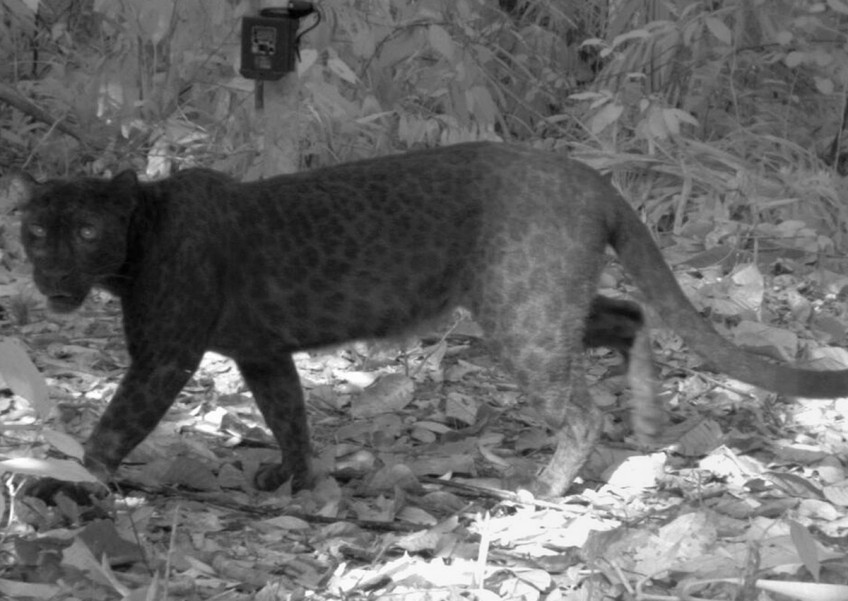Camera trick reveals black leopards' spots


SYDNEY - A simple camera adjustment has helped scientists illuminate the usually undetectable spots on black leopards - a trick they say will help them tell individual animals apart and aid the animals' conservation.
Scientists studying leopards on the Malay Peninsula, where most of the big cats are jet black, had difficulty telling the animals apart, an obstacle which was hindering research.
But photographs taken with the infrared flash firing on automatic cameras stationed in the forest show the animals' complex whirls of spots clearly standing out.
"It was really by accident that we discovered that if you can get that infrared flash to go off in the daytime you could suddenly see the spots," said William Laurance from Australia's James Cook University (JCU).
"And because the spots are unique, you can tell them all apart." Researchers said using the method in the north east of peninsular Malaysia had allowed them to accurately identify 94 per cent of black leopards - a boost for conservation efforts.
"It's basic, it's fundamental for trying to say things like how big is the population," Laurance told AFP.
"Otherwise you are simply just looking at these photos and you can't tell anything apart and it's really difficult to make any inference about population abundance, about population trends, about the impacts of different kinds of things over time."
It is not known why the leopards in this part of the world are mostly black, but Laurance said it was likely to better camouflage the animals in the dark rainforest.
Laurance said leopard skins and body parts were increasingly showing up in wildlife trading markets, with poaching thought to be widespread.
The study, which also involved the University of Nottingham's Malaysia Campus, a local research institute from Universiti Malaysia Terengganu and the Malaysian Wildlife Department, would aid the conservation of the cat, said JCU's Gopalasamy Reuben Clements.
"This will allow us to study and monitor this population over time, which is critical for its conservation," Clements said.